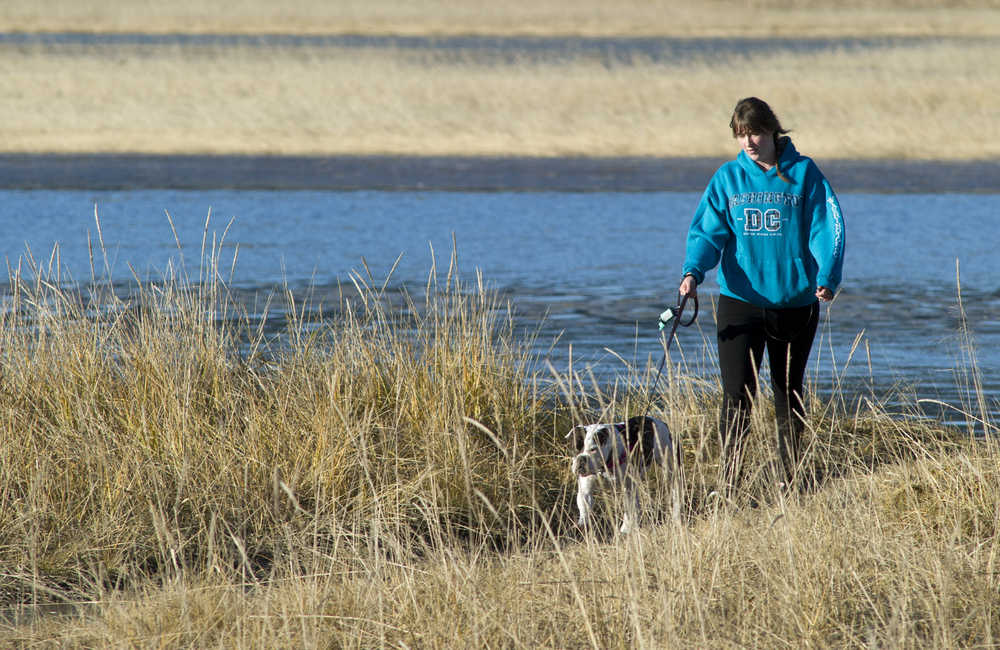From Yakutat to Ketchikan, October has never been this dry in Southeast Alaska.
“It’s certainly the driest October in a century, certainly,” said Rick Thoman, a meteorologist and climate science manager with the National Weather Service in Anchorage.
According to measurements taken by the weather service at Juneau airport, just 2.59 inches of precipitation (rain and melted snow) fell in October. That’s less than a third of normal and well below even the previous record-low, 3.28 inches in 1950. Records at the airport go back to 1936.
In Yakutat, just 3 inches of precipitation has been recorded. That’s less than half the previous low, 6.68 inches in 1950, and less than one-seventh the normal 21.98 inches that typically fall in October. Records at Yakutat date back to 1917.
In Ketchikan, there’s been 7.38 inches of precipitation, beating the previous low of 8.48 inches. Records there date to 1910. In Sitka, only 4.78 inches of rain has fallen, beating the previous low of 5.92 inches.
“Just looking at the anomalies, it looks like most or all of the long-term climate sites are going to set records,” Thoman said. “That’s really amazing.”
The extreme dry conditions continue into the Interior, where the Yukon River town of Eagle has also seen a record-dry month and Fairbanks has seen the driest October in modern history.
Meteorologists in Juneau and Anchorage said the dry conditions are the result of weather patterns that diverted the typical fall storms around Southeast Alaska.
“Basically, it’s just the storm track,” said Dave Snider, a National Weather Service meteorologist in Anchorage. “The jet stream … has really made a huge difference.”
The dry weather hasn’t yet affected the drinking-water and power reservoirs in the Juneau area.
“We’re not great … we’re still in good shape,” said Debbie Driscoll, vice president at Alaska Electric Light and Power.
The company is still able to serve all of its customers, including those with service that can be cut off when water levels are low.
That could change, she said, if the dry spell continues for another few weeks.
In the first half of October, when Juneau enjoyed sunny, clear skies, an S-shaped ridge of high pressure in the Gulf of Alaska acted like a shield, keeping storms away. In the last week of the month, it was two blobs of high pressure. With one over western Canada and another over the Interior, storms were forced toward Western Alaska, which endured high winds and heavy rain.
It’s impossible, the meteorologists said, to untangle day-to-day weather shifts from long-term global climate change and determine exactly how much of this unprecedented good weather comes from simple luck or a long-term change in trends.
On Monday, the National Weather Service’s Climate Prediction Center indicated that La Niña conditions are beginning to develop in the central Pacific. La Niña brings cooler water to the central Pacific, typically resulting in colder, drier winters in Southeast. This year, however, the Gulf of Alaska has been extremely warm, and the effect of La Niña is unknown.
Monday’s one-month forecast from the prediction center calls for a greater chance of a warm November in the region.
That would be a change from October, when clear skies allowed nighttime cooling that resulted in below-normal average temperatures in Juneau for the first time in more than a year.
Juneau hasn’t averaged below-normal monthly temperatures since September 2015, and that was the only time in two and a half years.
“With the clear nights, much more so than normal, that allows temperatures to drop off,” Thoman said.
Clear days permitted the sun to warm things up, but with less than 12 hours of daylight, the nights were cooler than the days were warmer.
Tom Ainsworth, a meteorologist for the Weather Service in Juneau, said the truly strange thing about this October in Juneau was that “It’ll end up being the driest October on record for a lot of locations in Southeast, but in Juneau, it’ll be the third snowiest October because of one day of snow.”
The 5.1 inches that fell on the 16th at the airport were equivalent to just over an inch of precipitation, more than a third of the month’s entire total.

